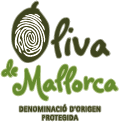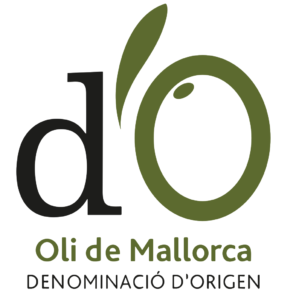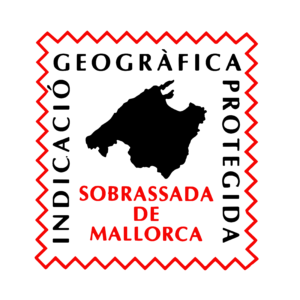The coca de tallades, also known as the carnival coca of Mallorca, is a delightful traditional dessert that has become synonymous with the vibrant carnival season in Mallorca. This culinary gem is not just a treat; it embodies the rich cultural heritage and festive spirit of the Balearic Islands. Join us as we explore the fascinating world of coca de tallades, from its ingredients to its historical significance.
How is the coca de tallades made?
Preparing the coca de tallades is a culinary adventure that requires attention to detail and a passion for baking. The process begins with the separation of egg whites and yolks, which is crucial for achieving the perfect texture. The egg whites are whipped until they form stiff peaks, creating a light and airy batter.
Next, the yolks are mixed with sugar and fats, typically a combination of lard and butter, which gives the coca its rich flavor. Once combined, the whipped egg whites are gently folded into this mixture, preserving their volume. This technique is vital for ensuring a fluffy and moist sponge cake.
After achieving the desired batter consistency, the next step involves layering the unique filling of calabazate and sobrassada. This combination not only adds a savory twist but also enhances the overall flavor profile of this festive dish.
What are the ingredients for coca de tallades?
The ingredients for coca de tallades are simple yet essential for creating its distinct taste. Here’s a basic list of what you’ll need:
- Eggs
- Sugar
- Flour
- Lard
- Butter
- Baking powder
- Milk
- Oil
- Calabazate (pumpkin jam)
- Sobrassada (cured sausage)
This combination of ingredients reflects the local produce and culinary traditions of Mallorca. The balance between sweet and savory makes coca de tallades a unique offering you won’t find elsewhere. The quality of each ingredient impacts the final taste, so we recommend using fresh, local products whenever possible.
What is the history of coca de tallades?
The history of coca de tallades is as rich as its flavor. This traditional dessert dates back to the island’s agricultural roots, where seasonal ingredients played a pivotal role in local cuisine. Originally, it was a dish prepared during celebrations, particularly during the vibrant carnival festivities, symbolizing abundance and the joy of community gatherings.
Over the years, coca de tallades evolved, adapting to modern tastes while retaining its traditional essence. Today, it is a beloved dessert that not only highlights the culinary prowess of Mallorca but also serves as a nostalgic reminder of the island’s cultural heritage. Families often pass down their unique recipes, ensuring that the art of making coca de tallades continues through generations.

What variations of coca de tallades exist?
While the classic version of coca de tallades features calabazate and sobrassada, various adaptations have emerged that cater to different palates. Some popular variations include:
- Coca amb tallades: This version is sliced and can be served with different toppings, such as fresh apricots or additional sobrassada.
- Sweet variants: These often feature fruit fillings or sweet creams, appealing to those who prefer a sugary delight.
- Savory options: You might find versions that incorporate local cheeses or vegetables, making it a versatile dish for any occasion.
Each variation brings its own personality to the table, allowing the coca de tallades to shine in various culinary contexts. Whether you enjoy it sweet or savory, there’s a version to suit every taste.
Why is coca de tallades popular during carnival?
The coca de tallades holds a special place in the hearts of Mallorcans, especially during the carnival season. Its popularity stems from its deep-rooted connections to local traditions and the festive atmosphere that carnival brings. Carnival is a time of indulgence, celebration, and community, and what better way to celebrate than with a delicious dessert?
During carnival, you’ll find coca de tallades served at local festivities and family gatherings alike. It acts as a symbol of joy and togetherness, a treat that brings people together to share stories and laughter. The rich flavors and vibrant colors of this dessert perfectly fit the lively spirit of the carnival.
How to serve coca de tallades?
When it comes to serving coca de tallades, presentation is key. After baking, allow the coca to cool before dusting it with powdered sugar for a touch of elegance. It can be cut into squares or triangles, making it easy to share with friends and family.
For the ultimate experience, we recommend pairing the coca with a hot beverage, such as coffee or tea, or a refreshing glass of sweet wine. This will enhance the flavors and make your serving a memorable affair.
Moreover, consider adding a scoop of ice cream or yogurt on the side for a delightful contrast to the warm coca. The balance of textures will create a multi-sensory experience that everyone will enjoy.
For those who love experimenting in the kitchen, feel free to create your own unique serving ideas, combining coca de tallades with seasonal fruits or drizzling it with chocolate sauce for an added flair.
Related questions about carnival coca of Mallorca
How do you make coca de tallades?
To make coca de tallades, start by separating the eggs and whipping the egg whites. Combine the yolks with sugar, lard, and butter, then fold in the whipped egg whites. Gradually add flour and baking powder, followed by milk and oil. Once the batter is ready, layer calabazate and sobrassada in the baking mold and bake until golden. The technique and care taken in preparation are what make this dish truly special.
What is the origin of coca de tallades?
The origin of coca de tallades is deeply rooted in Mallorcan tradition, dating back to agricultural practices. This dessert was often prepared during celebrations, particularly during carnival season, reflecting the island’s rich culinary heritage. It showcases local ingredients and embodies the communal spirit synonymous with carnival festivities.
Can coca de tallades be made with different fillings?
Absolutely! While the traditional filling consists of calabazate and sobrassada, variations are abundant. You can experiment with sweet fillings like fruits, creams, or jams, or opt for savory combinations with local cheeses or vegetables. The flexibility of coca de tallades allows for a range of flavors, catering to different preferences.
What are the best occasions to serve coca de tallades?
Coca de tallades is perfect for various occasions, particularly during carnival celebrations. However, it can also be enjoyed at family gatherings, birthday parties, or festive brunches. Its versatile nature makes it a delightful addition to any event, ensuring that guests leave with a sweet taste of Mallorca.
Is coca de tallades served warm or cold?
Traditionally, coca de tallades is best enjoyed at room temperature or slightly warm. This enhances the flavors and makes the textures more enjoyable. However, some people prefer it chilled, especially during warmer months. Ultimately, it comes down to personal preference!









